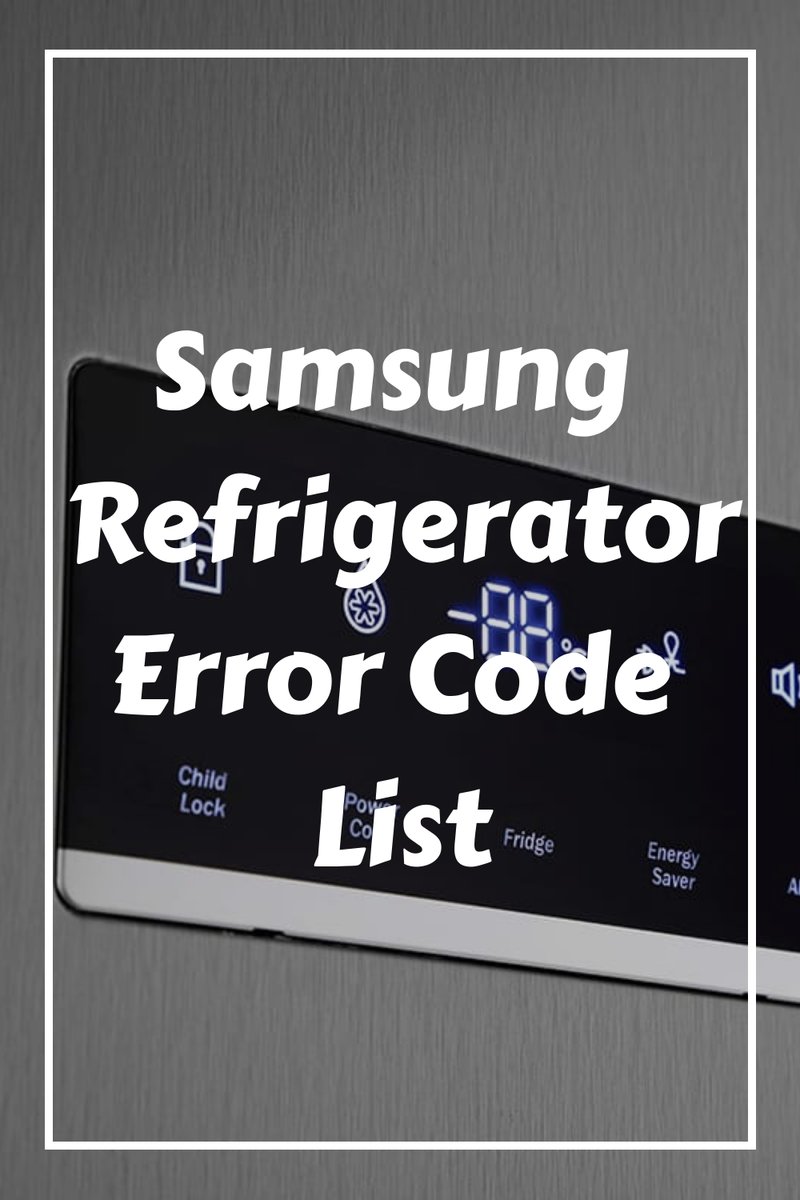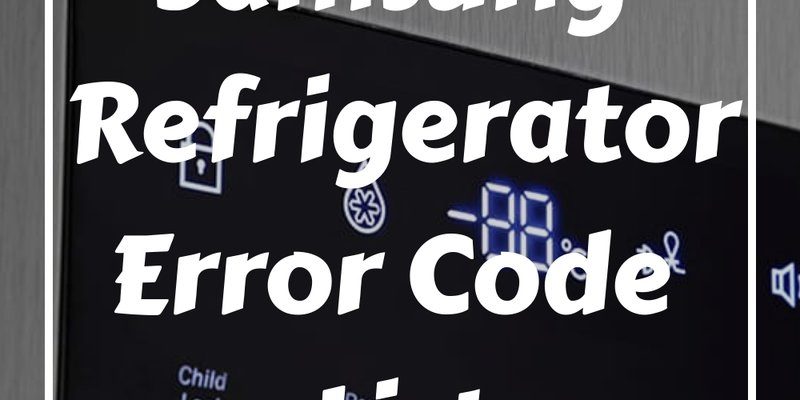
Let’s start by putting this mystery into everyday terms. Imagine your refrigerator is like a car dashboard, and the F1 code is its way of lighting up a warning indicator. It’s trying to communicate that something isn’t quite right, but it doesn’t mean your fridge is going to explode or anything drastic like that. Essentially, there’s a sensor or component inside that needs a little TLC, much like when your car tells you it’s time for an oil change. So, while it could be a sign that some maintenance is needed, it’s not necessarily dangerous to use your fridge in the meantime.
Understanding the F1 Error Code
So, what exactly does the F1 error mean? In the simplest terms, the F1 code on your Samsung fridge is usually an indication of a power fault or a communication failure between components. Picture it like a miscommunication between team members trying to achieve a common goal. When one part of the refrigerator can’t talk to another part properly, it raises a flag, much like waving a red flag to get someone’s attention.
Typically, this error could be pointing to an issue with the power board, control board, or even a temperature sensor that’s not doing its job correctly. Think of these components like the orchestra of your fridge; when one instrument goes out of tune, the whole performance can be a bit off. While the fridge may still keep your food cold, it’s giving a heads-up that it needs a technician to take a closer look.
As a beginner, it’s important to know that although the F1 error might seem daunting, it’s not always as severe as it sounds. It’s more of an invitation to investigate further rather than a cause for panic. The fridge is still functional, but it’s letting you know that something isn’t operating 100% as it should.
Possible Causes and Effects of the F1 Error Code
You might be curious about the causes behind this error code. Usually, it boils down to a few common suspects. Sometimes, it’s simply a glitch that resolves if you unplug the fridge for a few minutes and then plug it back in, like resetting a frozen computer. In other cases, it might be due to a faulty connection or a specific part that has worn out over time.
Imagine the F1 code as a symptom like a cough when you have a cold. It’s alerting you there’s something that needs attention, but it could range from a minor cold to something requiring a professional diagnosis. Ignoring the error long-term might lead to inefficient performance or increased energy bills since your fridge could be working harder to maintain its cool.
If you notice any unusual noises or if the fridge’s cooling isn’t up to par, these could be side effects of the original issue. In such cases, calling in a professional who knows Samsung appliances inside and out would be the best course of action. They can diagnose whether it’s a power board swap or a simple sensor readjustment to get everything back in harmony.
Steps to Take When You Encounter the F1 Error
Now, what should you do if your Samsung fridge is showing this F1 code? First off, try not to stress. Begin with a simple step: unplug the fridge for about five to ten minutes, and then plug it back in. This is akin to rebooting your laptop when it’s acting up—it can clear minor glitches and reset operations.
If the error persists, consider consulting your refrigerator’s user manual. It’s like having a map when you’re lost; it can guide you through understanding your appliance better. The manual might have specific troubleshooting steps for the F1 error.
Should these steps not resolve the issue, it’s time to call in the cavalry. Reach out to a certified Samsung technician. They possess the expertise and tools to pinpoint the problem accurately. Continuing to use the fridge without addressing the error might not be dangerous immediately, but it’s like driving a car with the check engine light on – eventually, it could lead to more significant issues.
Preventing Future Error Codes
Finally, let’s talk about prevention. While some issues are unavoidable, regular maintenance can help keep your fridge running smoothly. Think of it like going for regular dental check-ups to prevent cavities. Keeping your refrigerator clean, ensuring good airflow around it, and checking that door seals are tight can go a long way in maintaining its health.
Sometimes, the sensors and components can become dusty or blocked, which might cause these error codes to pop up. So, keeping your refrigerator and its surroundings clean is an excellent first line of defense. You might also consider scheduling an annual check-up with an appliance technician, just as you would for your HVAC system, to catch any potential issues before they turn into error codes.
To sum up, while seeing an F1 error code can be a bit of a surprise, it’s not the end of the world. By understanding what it means, taking the right steps, and maintaining your fridge, you can keep your cool both in the kitchen and with your Samsung appliance.
